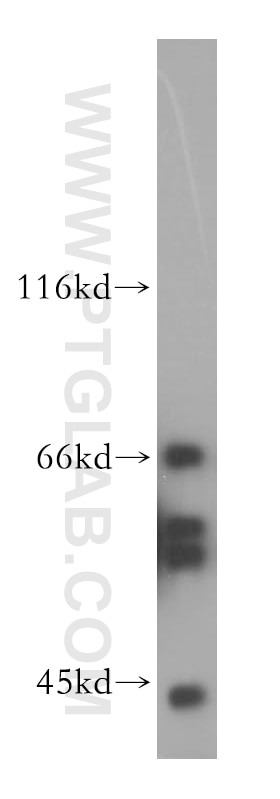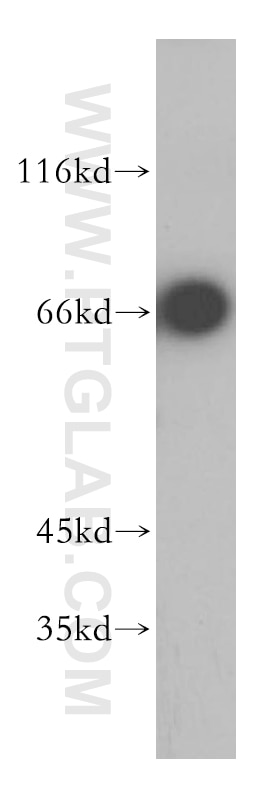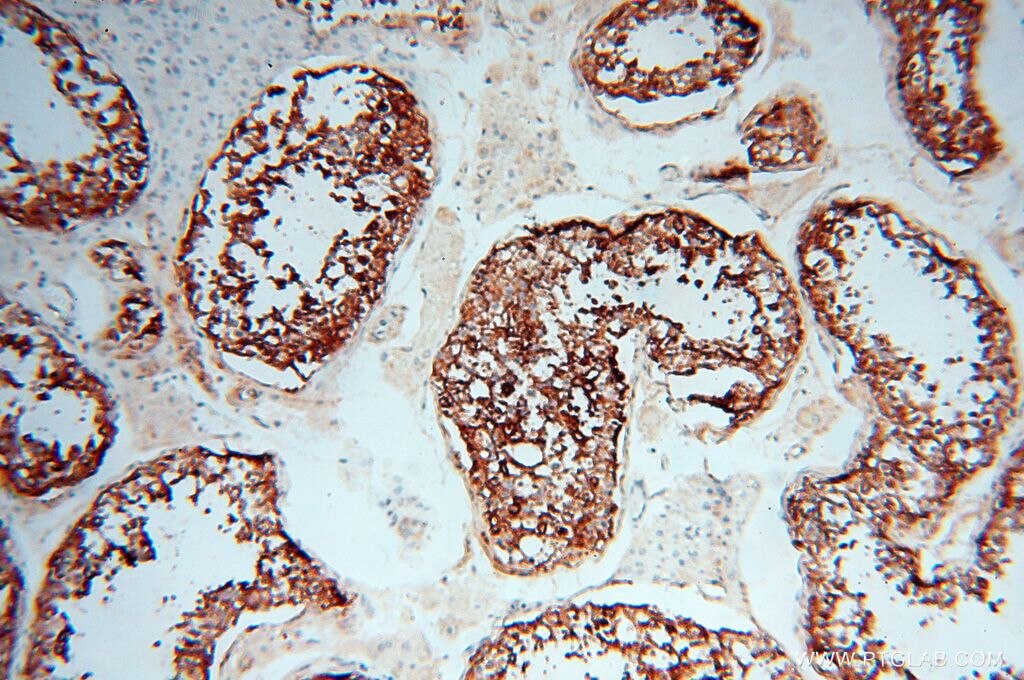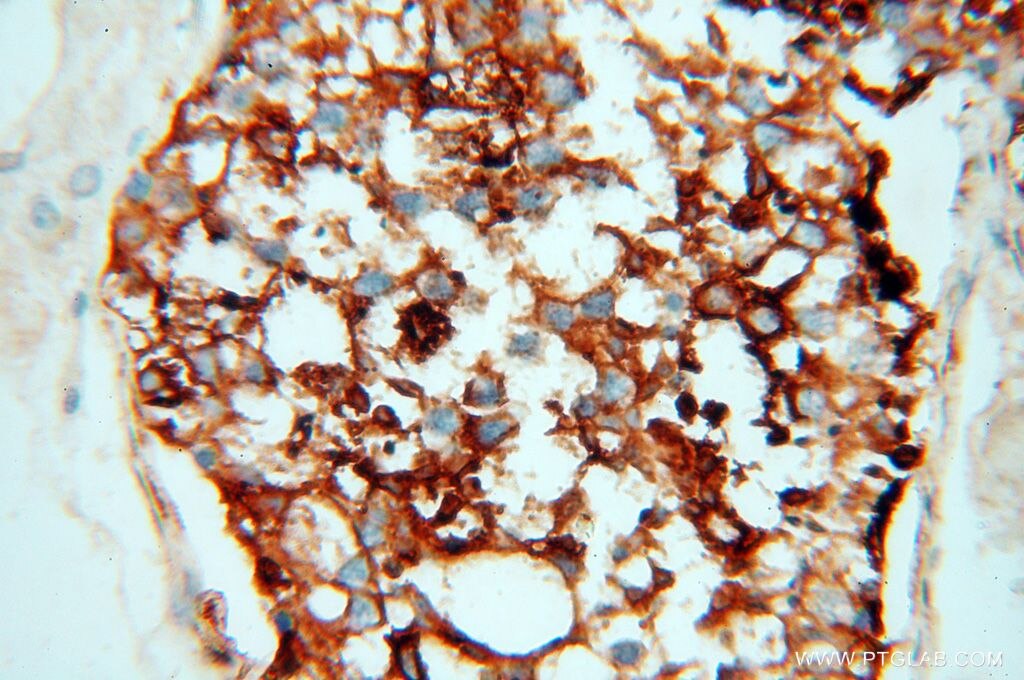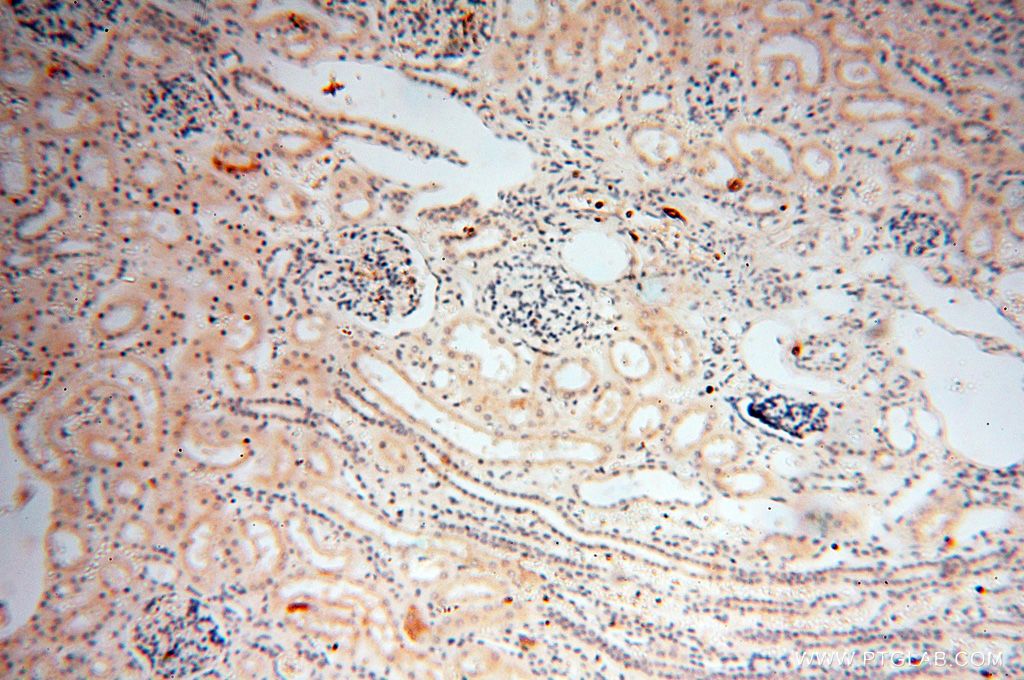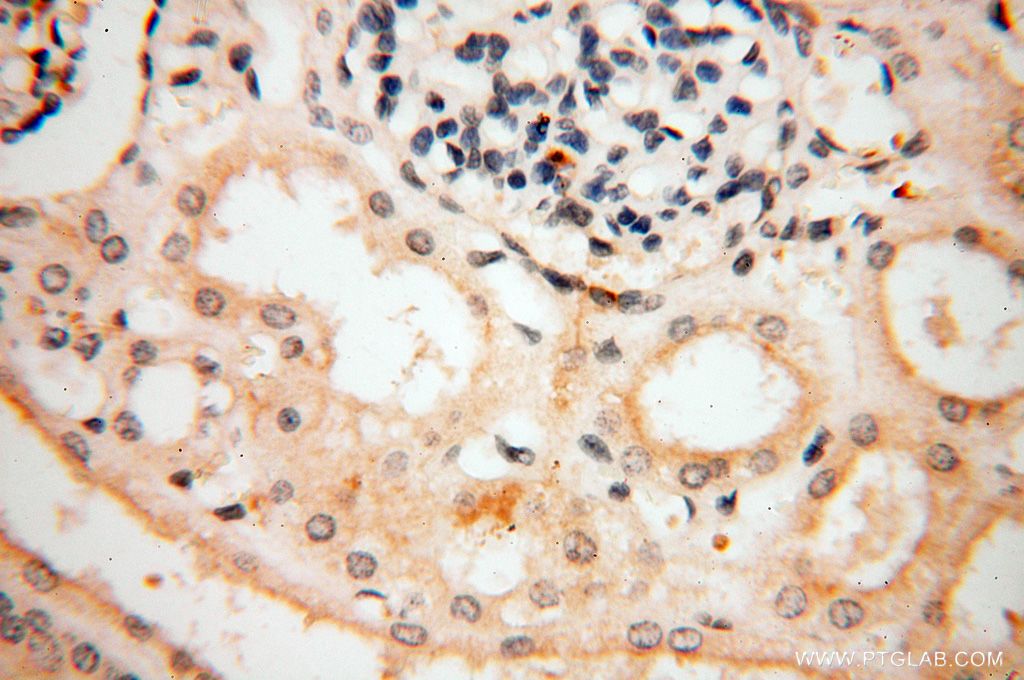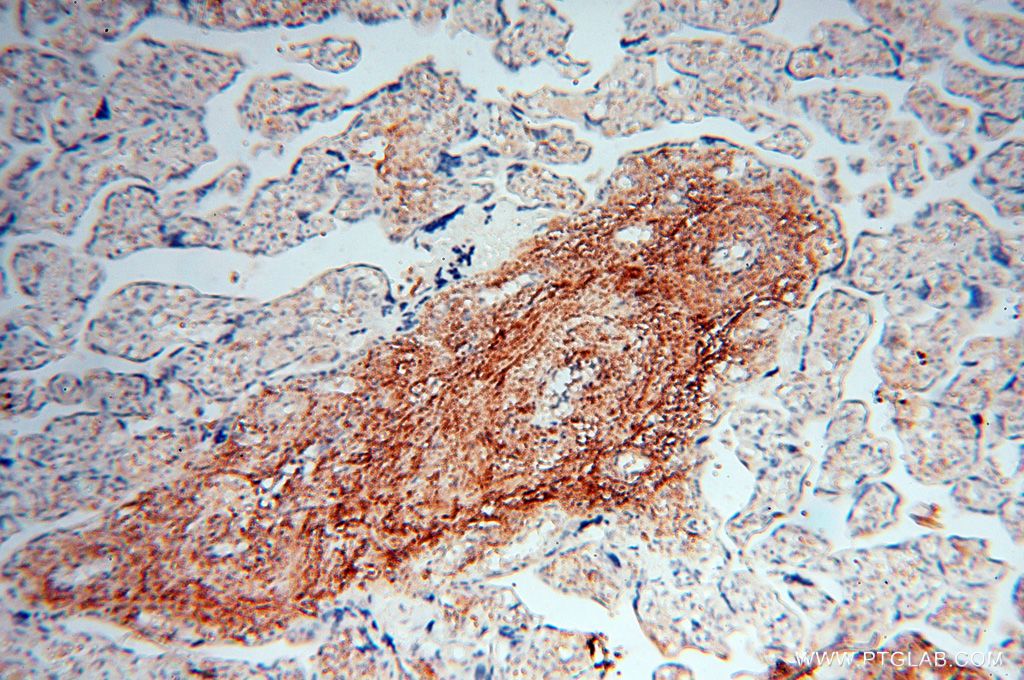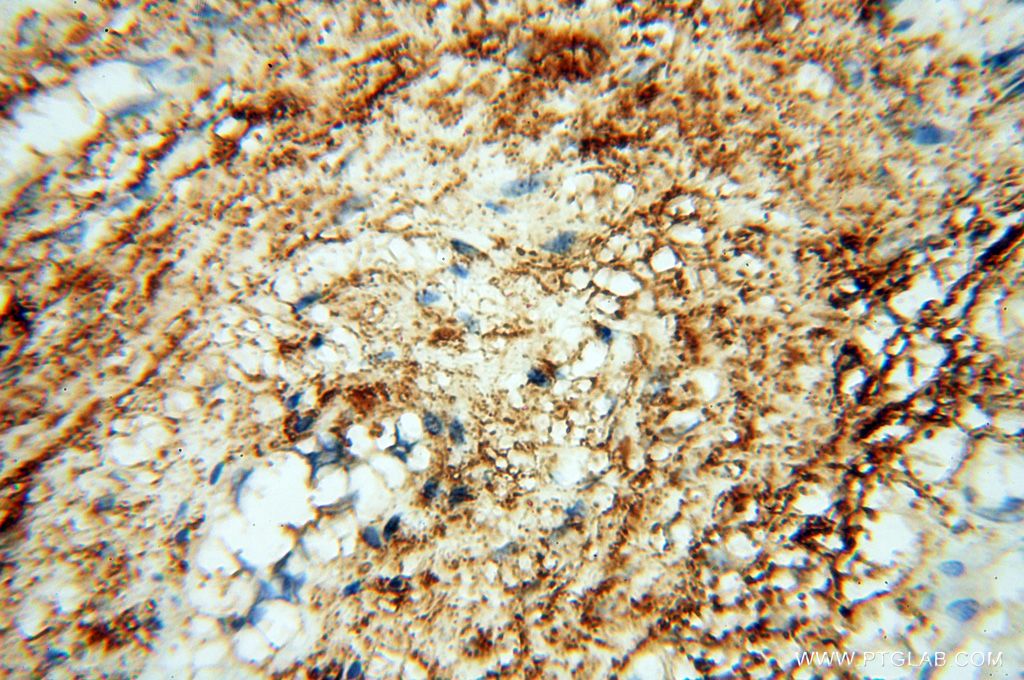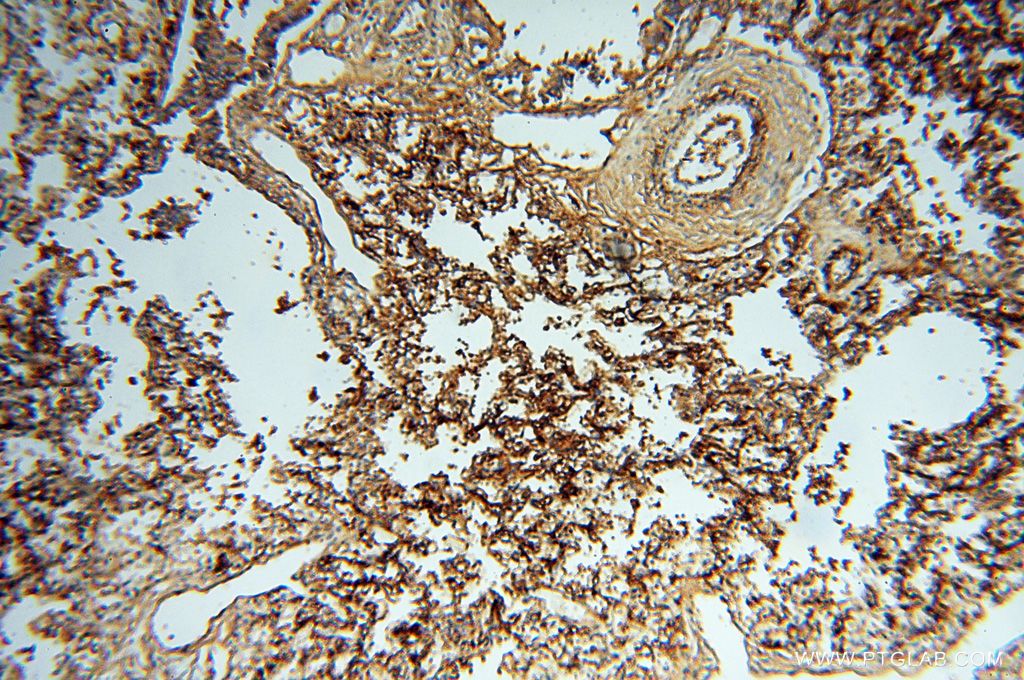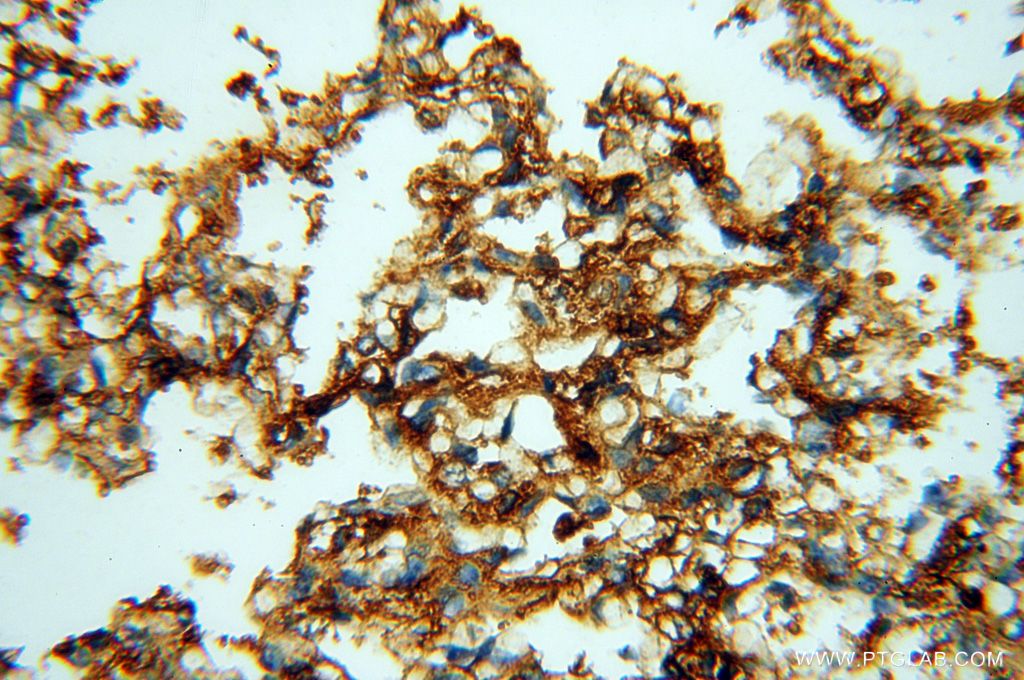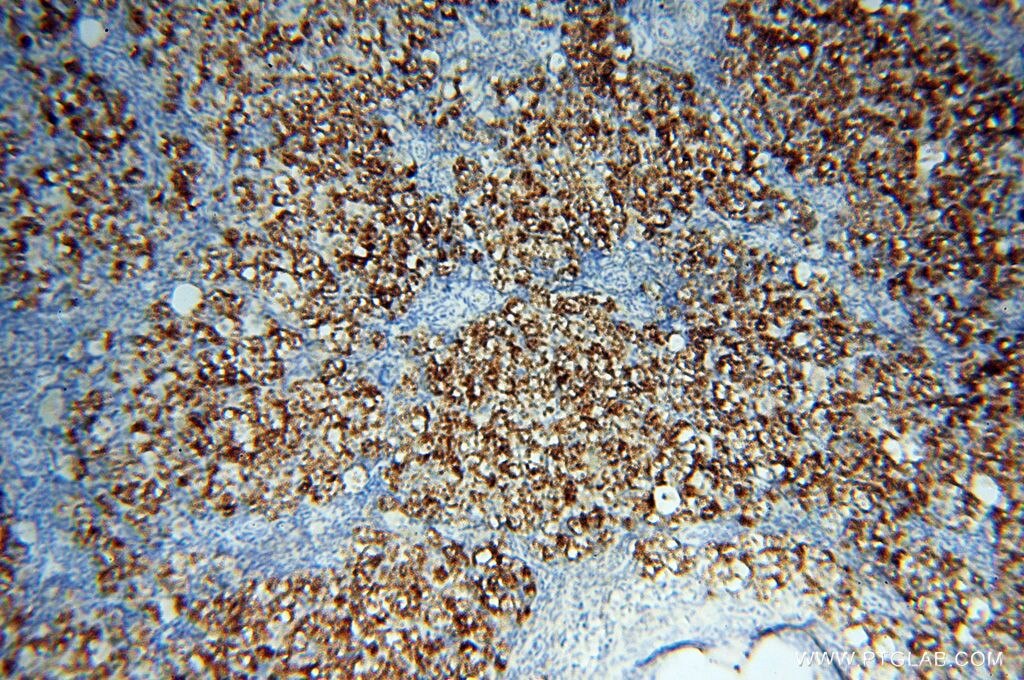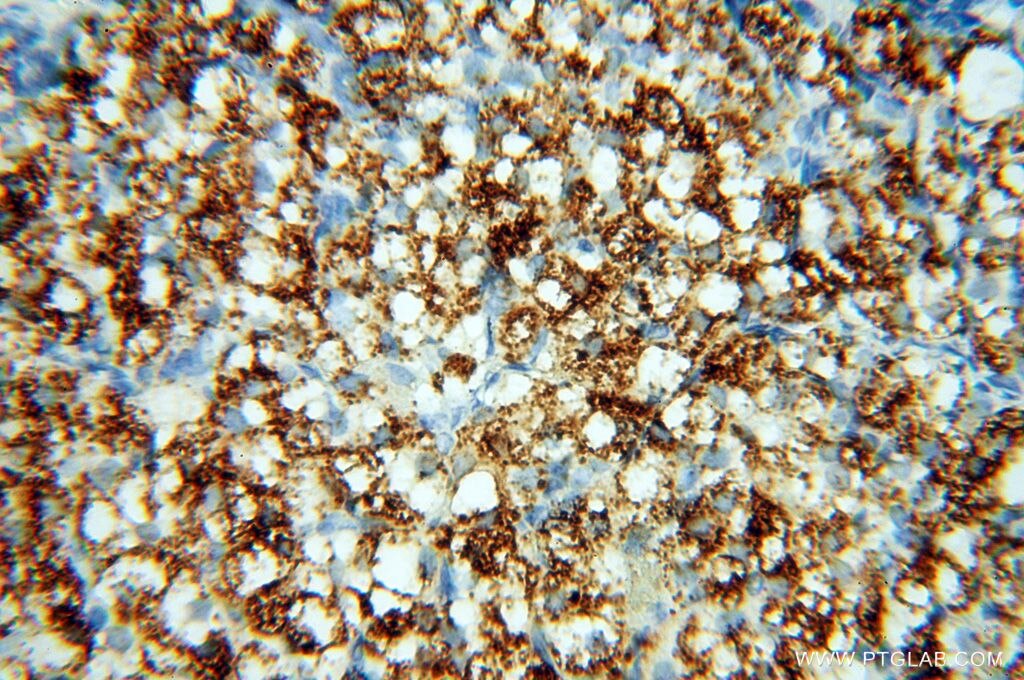P2RY1 Polyklonaler Antikörper
P2RY1 Polyklonal Antikörper für IHC, WB,ELISA
Wirt / Isotyp
Kaninchen / IgG
Getestete Reaktivität
human, Maus, Ratte
Anwendung
WB, IHC,ELISA
Konjugation
Unkonjugiert
Kat-Nr. : 18273-1-AP
Synonyme
Galerie der Validierungsdaten
Geprüfte Anwendungen
| Erfolgreiche Detektion in WB | Jurkat-Zellen, Mausherzgewebe |
| Erfolgreiche Detektion in IHC | humanes Hodengewebe, humanes Eierstockgewebe, humanes Lungengewebe, humanes Nierengewebe, humanes Plazenta-Gewebe Hinweis: Antigendemaskierung mit TE-Puffer pH 9,0 empfohlen. (*) Wahlweise kann die Antigendemaskierung auch mit Citratpuffer pH 6,0 erfolgen. |
Empfohlene Verdünnung
| Anwendung | Verdünnung |
|---|---|
| Western Blot (WB) | WB : 1:500-1:1000 |
| Immunhistochemie (IHC) | IHC : 1:20-1:200 |
| It is recommended that this reagent should be titrated in each testing system to obtain optimal results. | |
| Sample-dependent, check data in validation data gallery | |
Produktinformation
18273-1-AP bindet in WB, IHC,ELISA P2RY1 und zeigt Reaktivität mit human, Maus, Ratten
| Getestete Reaktivität | human, Maus, Ratte |
| Wirt / Isotyp | Kaninchen / IgG |
| Klonalität | Polyklonal |
| Typ | Antikörper |
| Immunogen | P2RY1 fusion protein Ag12992 |
| Vollständiger Name | purinergic receptor P2Y, G-protein coupled, 1 |
| Berechnetes Molekulargewicht | 373 aa, 42 kDa |
| Beobachtetes Molekulargewicht | 42 kDa, 57 kDa-59 kDa, 66 kDa |
| GenBank-Zugangsnummer | BC074785 |
| Gene symbol | P2RY1 |
| Gene ID (NCBI) | 5028 |
| Konjugation | Unkonjugiert |
| Form | Liquid |
| Reinigungsmethode | Antigen-Affinitätsreinigung |
| Lagerungspuffer | PBS mit 0.02% Natriumazid und 50% Glycerin pH 7.3. |
| Lagerungsbedingungen | Bei -20°C lagern. Nach dem Versand ein Jahr lang stabil Aliquotieren ist bei -20oC Lagerung nicht notwendig. 20ul Größen enthalten 0,1% BSA. |
Protokolle
| Produktspezifische Protokolle | |
|---|---|
| WB protocol for P2RY1 antibody 18273-1-AP | Protokoll herunterladen |
| IHC protocol for P2RY1 antibody 18273-1-AP | Protokoll herunterladen |
| Standard-Protokolle | |
|---|---|
| Klicken Sie hier, um unsere Standardprotokolle anzuzeigen |
